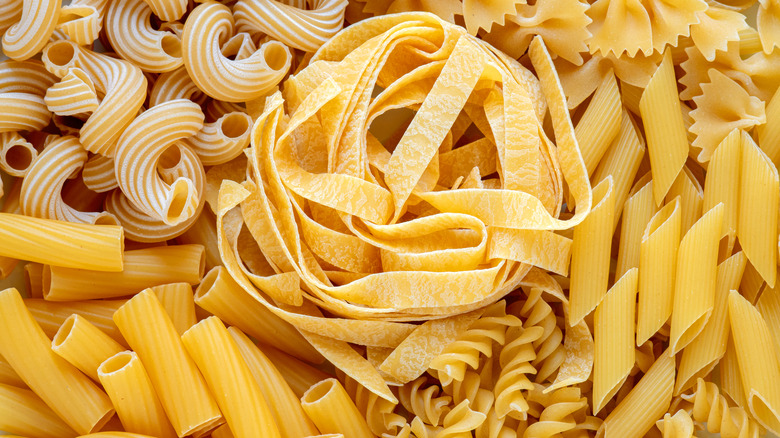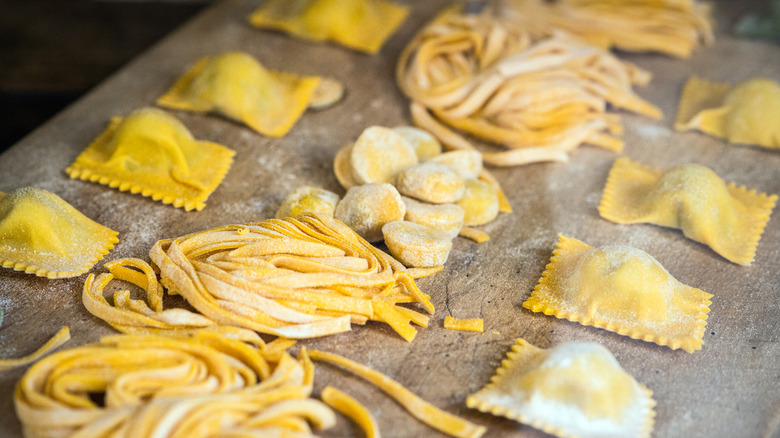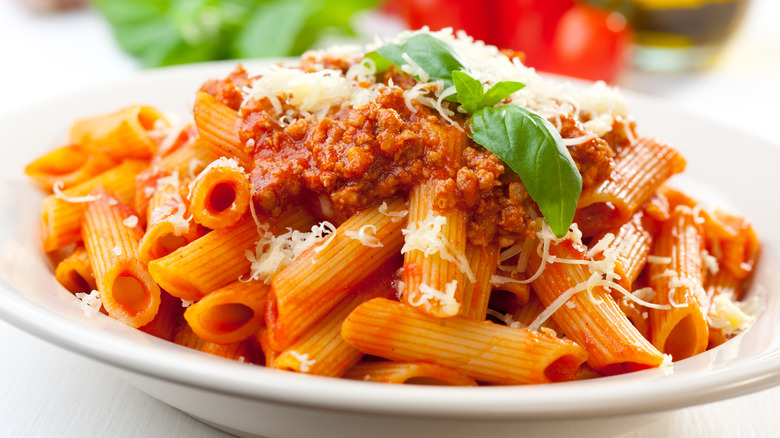Regardless Of What You May Think, Pasta Shape Does Not Affect Taste
If you've ever thought that the appearance of a certain food affected its taste, you're not alone. Have you had green bagels or enjoyed a green beer on St. Patrick's Day and swore there was something different about their flavor? It's psychological, and the same can be said for pasta shapes. Despite the fact that linguine and rigatoni might seem like they taste different, they're actually made with the same ingredients, resulting in basically no flavor difference.
Different pastas might work better with certain sauces, but that isn't because they taste drastically different. Rather, certain shapes are more conducive to thicker, heartier sauces, while others work better with milder, thinner ones. Plus, fresh pasta and store-bought pasta might taste different from one another because of the addition of eggs in the fresh version. But at the end of the day, boxed rigatoni tastes the same as boxed macaroni, despite what our brains try to tell us.
Most pasta contains the same basic ingredients
The recipe for shells is no different than the recipe for elbows or farfalle (aka bowties). If you're purchasing the store-bought version, it's likely made with just semolina and durum wheat flour, though some pastas are only made with one of the two. Some people prefer shells to elbows when making macaroni and cheese because of the way the shape holds the cheese sauce — though in a taste test of popular mac and cheese pasta shapes, the Wilmington Star-News awarded the top spot to farfalle, highlighting its "structural integrity." While you might have a pasta preference depending on whether or not you prefer ample amounts of cheese in every bite, the flavor of the noodles remains the same.
With that said, fresh pasta does have a slightly different, richer flavor because it's made with eggs, which most boxed pastas are not. Eggs don't have a particularly lengthy shelf life, so pasta companies often omit them from the boxed stuff so it will last longer. But if you prefer to make pasta at home, you'll likely add eggs for a richer flavor and texture, which is why there is sometimes a flavor difference in the fresh version.
Why do we use different pasta shapes with different sauces?
If the flavor remains the same, why do different pasta shapes exist? Ultimately, it comes down to personal preference; there is no hard and fast rule to which pasta goes with which sauce. However, culinary professionals often pair heavier pasta shapes with heavier sauces so that both are equally enjoyed within the dish, and one doesn't overpower the other.
"Different pasta shapes and styles add a good contrast in texture to the sauce you're using," chef Barry Tonkinson, Director of Culinary Research & Development at the Institute of Culinary Education, told Delish. You're better off pairing a thicker noodle, such as fettuccine or pappardelle, with a thicker sauce, like Alfredo. Thinner sauces, like a clam sauce or red sauce, can go with thinner pasta. Spaghetti or linguine are both solid choices. If the sauce has meat in it, try using a thick, shorter pasta as opposed to a long noodle, such as ziti or rigatoni. "The meat can enter the tubes and the pasta acts as a great vehicle to carry the sauce," according to Tonkinson.


